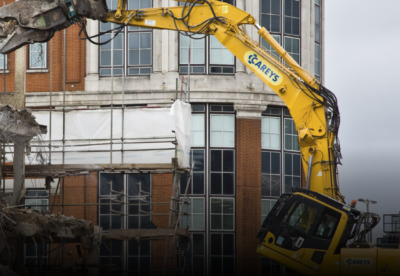The museum confirmed the start date as it announced the relocation of 27m specimens – around a third of its overall collection – to the new complex.
The new centre, will help ensure the collections and the vast data contained in them are safe, accessible and digitally available for researchers all over the world.
Spanning the size of approximately four football pitches, the sustainably built facility will provide state-of-the-art collections storage and conservation facilities, digitisation and imaging suites, molecular laboratories, cryo-facilities, high performance computing clusters and collaborative spaces for the museum’s leading research and visiting scientists.
Construction is scheduled to complete in 2026.
Dr Tim Littlewood, Executive Director of Science at the Natural History Museum said: “We are in a race against time to find evidence-based solutions to the major challenges facing our planet. We need accurate big data on nature to measure global change and inform future policies and this new centre will allow us to generate and process that through a major acceleration of our digitisation programme.”
Dr Doug Gurr, Director of the Natural History Museum added: “We’ve purposely chosen to develop the new centre at one of the leading hubs of technology and innovation in the UK and internationally, because the collections are such a powerful scientific tool. It’s a unique opportunity to reshape the role museum collections play in research, for the benefit of the UK and our contribution to international research.”
Curation and conservation teams have now begun to audit the collections and test out processes for checking, digitising, packaging and moving the millions of specimens to their new home – a process which is expected to take at least five years to complete.






.gif)
































 (300 x 250 px).jpg)













